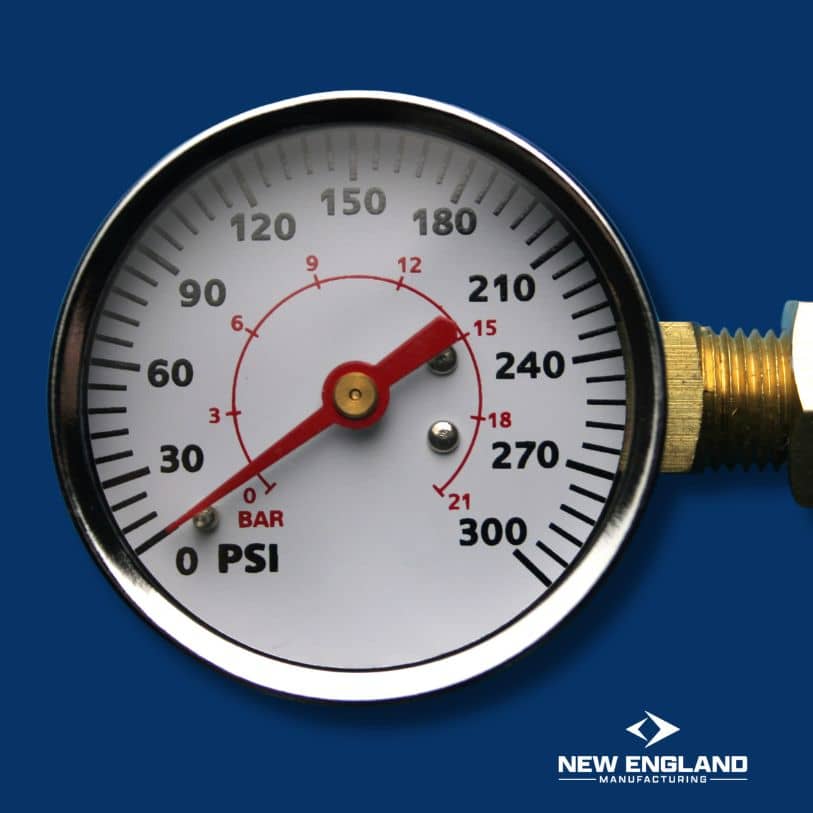How to Calculate Static Pressure: The Complete Guide for Fire Protection Professionals
Static pressure represents a fundamental concept vital to numerous industrial applications, particularly in fire protection systems and ventilation networks.
This technical guide addresses how to calculate static pressure through practical formulas and real-world examples for engineers and technicians working with fluid systems.
What is and How to Calculate Static Pressure?
Static pressure manifests as the perpendicular force exerted by a fluid against surfaces, regardless of fluid motion status. This pressure form exists independently of dynamic considerations and proves essential for proper system design across multiple industries.
Measurement typically occurs using:
- Pounds per square inch (psi) in water systems
- Pascals (Pa) in scientific applications
- Inches of water column (inWC) for air handling systems
Accurate static pressure calculations ensure proper equipment selection, code compliance, and operational efficiency for professionals designing fire protection networks or HVAC installations.
How to Calculate Static Pressure for System Applications
The calculation approaches vary based on fluid properties and system configuration, though underlying physical principles remain consistent across applications.
Basic Hydrostatic Formula
The fundamental equation governing static pressure in fluid columns follows:
P = ρgh
Where these variables represent:
- P: static pressure (pascals)
- ρ: fluid density (kg/m³)
- g: gravitational acceleration (9.81 m/s²)
- h: height of fluid column (meters)
When applied to water-based systems under normal conditions, the density value equals approximately 1000 kg/m³, yielding:
P = 1000 × 9.81 × h = 9810h Pa
Conversion factors between common measurement units:
- 6895 Pa = 1 psi
- 249 Pa = 1 inWC
- 2.31 feet of water column = 1 psi
Water System Calculations
For fire protection systems, engineers typically employ a simplified formula derived from basic hydrostatic principles:
P = 0.433 × h
With these values:
- P: pressure (psi)
- h: elevation difference (feet)
- 0.433: conversion constant based on water properties
This relationship establishes that every foot of elevation creates 0.433 psi of static pressure difference, a critical consideration when designing standpipes, evaluating hydrant capacity, or selecting pump equipment.
Applied Example: Hydrant Static Pressure
Consider a hydrant connected to a water supply elevated 125 feet above:
P = 0.433 × 125 = 54.13 psi
This calculation yields the baseline pressure available during no-flow conditions—a critical value for system design and hydraulic modeling.
How to Calculate Static Pressure in HVAC System Components
Air system static pressure differs significantly from water-based calculations due to compressibility factors and flow characteristics.
HVAC technicians must account for resistance elements throughout distribution networks when determining total system pressure.
The primary measurement unit typically employed, inches of water column (inWC), provides values within practical ranges for common system components.
Component Pressure Losses
Static pressure in HVAC systems represents the sum of individual pressure drops:
SP₍total₎ = SP₍ducts₎ + SP₍fittings₎ + SP₍filters₎ + SP₍equipment₎ + SP₍terminals₎
Each component contributes resistance based on:
- Physical dimensions and configuration
- Airflow velocity and volume
- Material surface characteristics
- Manufacturing tolerances
How to Calculate Static Pressure HVAC Duct Sections
Straight duct pressure losses follow established friction formulas:
SP = f × (L/100) × (V²/4005) × (12/D)
These variables represent:
- f: friction coefficient (material-dependent)
- L: duct length (feet)
- V: air velocity (feet per minute)
- D: duct diameter (inches)
Technical Example: Rectangular Duct
A rectangular duct measuring 12″×8″ extending 75 feet with 800 CFM airflow requires conversion to equivalent diameter:
D₍eq₎ = 1.3 × [(12 × 8)^0.625] ÷ [(12 + 8)^0.25] = 9.94 inches
Velocity calculation: V = 800 ÷ (9.94² × 0.7854) = 10.35 ft/sec = 621 ft/min
Using standard friction factor f = 0.018: SP = 0.018 × (75/100) × (621²/4005) × (12/9.94) = 0.11 inWC
This value represents only the straight duct contribution to system pressure.
How to Calculate Static Pressure of Fan Equipment
Fan static pressure defines the pressure difference from mechanical energy transfer to the airstream. Determination requires:
- Measuring upstream static pressure
- Measuring downstream static pressure
- Calculating the differential between measurements
Professional equipment selection requires matching fan performance curves with system resistance curves at the design airflow point.
Fan Selection Factors
Beyond basic static pressure, additional considerations include:
- Total pressure requirements (static plus velocity)
- System effect factors from non-ideal installations
- Variable frequency drive impacts on performance curves
- Motor power sufficiency across operational range
Industry standards published by the AMCA (Air Movement and Control Association) provide standardized testing protocols, ensuring consistent measurement approaches across manufacturers.
Performance Degradation Analysis
Systems frequently experience increasing static pressure requirements over time due to:
- Filter loading and contamination
- Dust accumulation on fan blades
- Damper position adjustments
- Coil fouling
Regular static pressure monitoring establishes baseline values against which future measurements compare, enabling proactive maintenance before system failure occurs.
How to Calculate Static Pressure in Duct Networks
A complete duct system analysis requires identifying the critical path—the route with the highest cumulative pressure losses—and calculating total pressure requirements.
The process involves:
- Mapping all potential airflow paths
- Calculating individual component losses
- Summing pathway resistances
- Determining maximum pressure requirement
Standard Component Pressure Drops
Typical pressure losses for common elements include:
| Component | Typical Range (inWC) | Factors Affecting Loss |
| Filters | 0.15-0.55 | MERV rating, dust loading |
| Cooling Coils | 0.25-0.70 | Rows, fins per inch, velocity |
| Heating Coils | 0.10-0.45 | Configuration, velocity |
| Diffusers | 0.05-0.20 | Type, throw distance, volume |
| Grilles | 0.03-0.15 | Free area ratio, velocity |
| Dampers | 0.10-0.30 | Position, blade configuration |
Professional design references provide comprehensive pressure loss coefficients for specific configurations based on standardized testing.
Measurement Techniques and Equipment
Accurate static pressure determination requires proper instrumentation and methodology:
Water System Measurement
- Calibrated pressure gauges (minimum accuracy ±2%)
- Digital pressure transducers with data logging capability
- Proper gauge placement with isolation valves
- Atmospheric pressure compensation when needed
Air System Measurement
- Digital micromanometers (accuracy ±0.001 inWC)
- Static pressure tips perpendicular to airflow
- Placement minimum 3× duct diameter from transitions
- Multiple-point traversing for spatial averaging
Both system types require testing under standardized conditions with properly calibrated instruments to ensure measurement validity.
Field Testing Protocols for How to Calculate Static Pressure
Standard testing practices include:
- System set to normal operating mode
- All components properly installed and operational
- Closed doors, representing typical conditions
- Multiple measurements averaged for consistency
- Documentation of atmospheric conditions
NFPA standards mandate specific testing intervals and minimum performance requirements based on static pressure measurements for fire protection systems.
Troubleshooting Based on Static Pressure
Abnormal static pressure readings often indicate system problems:
| High Static Pressure | Low Static Pressure |
| Restricted filters | Duct leakage |
| Closed dampers | Disconnected components |
| Undersized ductwork | Fan belt slippage |
| Coil fouling | Improper fan rotation |
| System blockages | Damaged equipment |
Tracking static pressure trends over time provides superior diagnostic capability compared to single measurements.
Industrial Applications
Industries relying on precise static pressure calculations include:
- Fire protection: hydrant systems, standpipes, sprinklers
- HVAC: commercial buildings, clean rooms, hospitals
- Process control: pharmaceutical production, food processing
- Manufacturing: dust collection, material transport
- Energy production: combustion air, emissions control
Each field employs specialized calculation techniques addressing industry-specific requirements while adhering to fundamental pressure principles.
Mastering Static Pressure: The Foundation of Effective System Design
Accurate static pressure calculation forms the foundation of effective system design, equipment selection, and operational troubleshooting across multiple industries.
Engineers and technicians who master these fundamental principles and calculation methods ensure that installations meet regulatory requirements and performance expectations.
The formulas and examples provided establish a framework applicable to various fluid systems, recognizing that proper application requires understanding theoretical foundations and practical field considerations.
Regular testing, precise measurement, and proper documentation support sustainable system performance throughout the operational lifespan.
Don’t hesitate to contact us if you want more information on static pressure or an in-depth analysis of how fire protection systems work. Our experts will be happy to help!

Mark R.
With a strong foundation in industrial safety and fire protection systems, Mark R. specializes in creating clear, technical, and compliance-driven content. Writing for SafeTech Reports, he covers topics such as fire hydrant testing, PPE protocols, emergency procedures, and smart technology integration in safety systems. His work ensures that professionals stay informed on the latest regulations, best practices, and emerging trends in safety and infrastructure maintenance.
Get in touch
We usually respond within 24 hours
Need Reliable Water Flow Test Equipment?
For over 70 years, New England Manufacturing has been the trusted source for fire hydrant and water flow testing kits. From pitot gauge kits to custom test kits, we provide precision, durability, and expert calibration to meet your needs.
- Custom-built test kits
- High-quality pressure gauges
- Reliable calibration services



